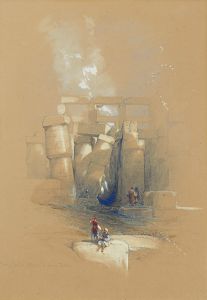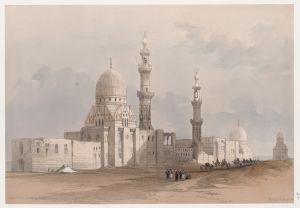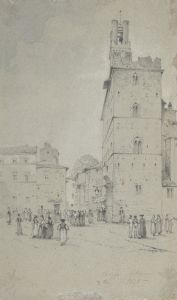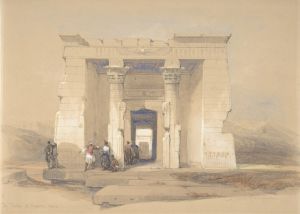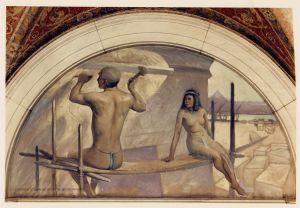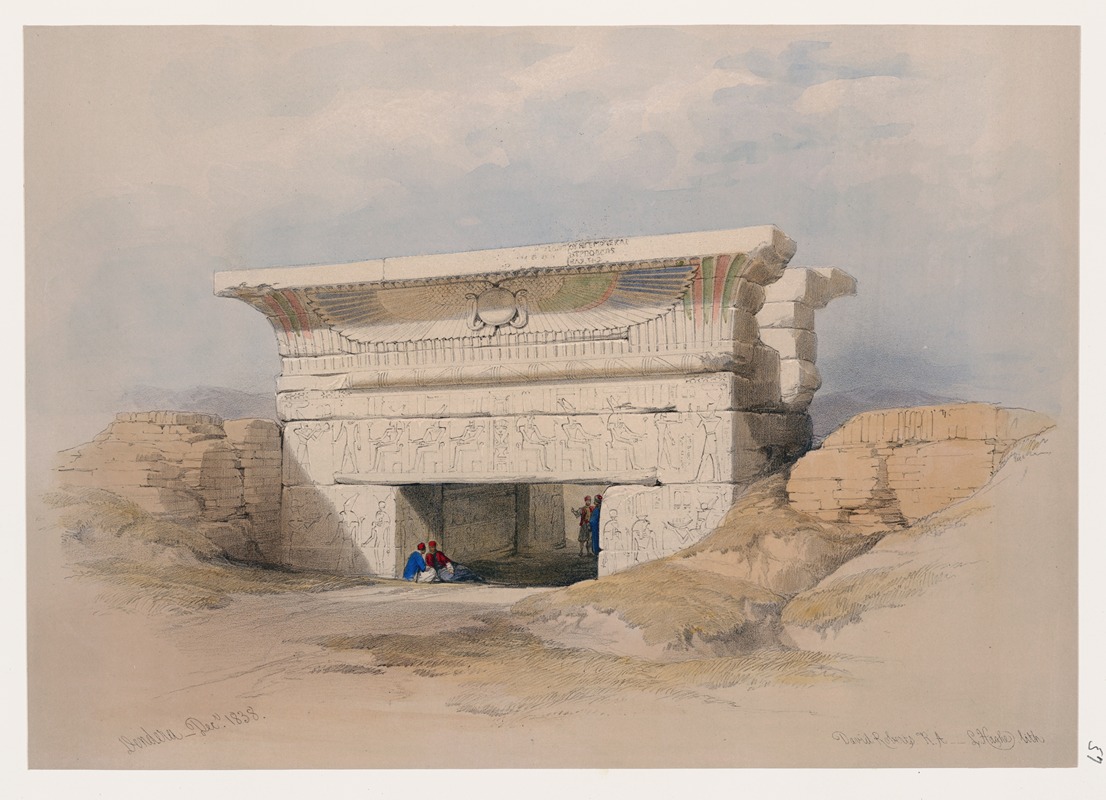
Dendera [Dandara]. Dec. 1838.
A hand-painted replica of David Roberts’s masterpiece Dendera [Dandara]. Dec. 1838., meticulously crafted by professional artists to capture the true essence of the original. Each piece is created with museum-quality canvas and rare mineral pigments, carefully painted by experienced artists with delicate brushstrokes and rich, layered colors to perfectly recreate the texture of the original artwork. Unlike machine-printed reproductions, this hand-painted version brings the painting to life, infused with the artist’s emotions and skill in every stroke. Whether for personal collection or home decoration, it instantly elevates the artistic atmosphere of any space.
David Roberts' artwork "Dendera [Dandara]. Dec. 1838" is a lithograph based on a sketch he created during his travels in Egypt in December 1838. David Roberts (1796–1864) was a Scottish painter and one of the most prominent Orientalist artists of the 19th century. He is best known for his detailed and romanticized depictions of the Middle East and North Africa, which were widely admired in Europe during his time.
The lithograph depicts the Temple of Hathor at Dendera, an ancient Egyptian temple complex located near the modern town of Qena, on the west bank of the Nile River. The Temple of Hathor is one of the best-preserved temples in Egypt and was dedicated to Hathor, the goddess of love, beauty, music, and motherhood. The structure dates back to the Ptolemaic and Roman periods, with construction beginning in the late Ptolemaic era (circa 54 BCE) and continuing into the Roman period (circa 20 CE).
Roberts visited the site during his extensive journey through Egypt and the Near East from 1838 to 1839. His travels were part of a larger trend of European exploration and fascination with ancient Egypt during the 19th century, often referred to as "Egyptomania." Roberts meticulously documented the architectural and cultural landmarks he encountered, creating sketches that were later turned into lithographs by Louis Haghe, a renowned Belgian lithographer. These lithographs were published in a series titled The Holy Land, Syria, Idumea, Arabia, Egypt, and Nubia between 1842 and 1849.
"Dendera [Dandara]. Dec. 1838" captures the grandeur of the Temple of Hathor, showcasing its massive columns and intricate carvings. Roberts' depiction emphasizes the scale and artistry of the ancient structure, often including figures in the foreground to provide a sense of proportion. His works were not only artistic achievements but also served as valuable visual records of these historical sites during a period when photography was still in its infancy.
The lithographs produced from Roberts' sketches were highly influential and widely distributed, contributing to the Western world's understanding and appreciation of ancient Egyptian architecture and culture. They remain significant both as works of art and as historical documents, offering insights into the state of these monuments in the 19th century.
Roberts' "Dendera [Dandara]. Dec. 1838" continues to be appreciated for its artistic quality and historical importance, reflecting the intersection of art, exploration, and archaeology during the 19th century.





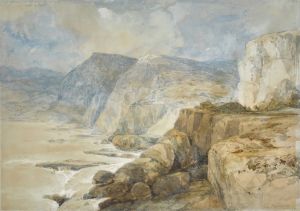
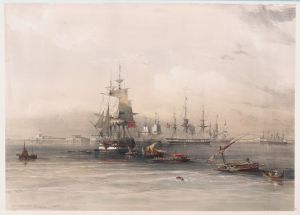
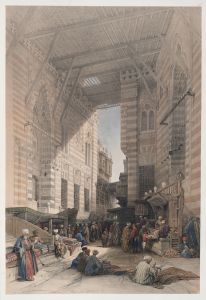
![Colossus in front of Temple of Wady Saboua [Wadi al-Sabua], Nubia.](/imgs/217471/s/david-roberts-colossus-in-front-of-temple-of-wady-saboua-wadi-alsabua-nubia-503a97c9.jpg)
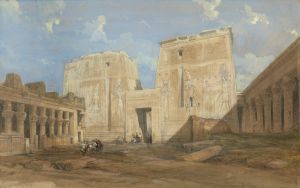
![Karnac [Karnak]. Nov. 27, 1838.](/imgs/217501/s/david-roberts-karnac-karnak-nov-27-1838-2ea4b2c4.jpg)
![Karnac [Karnak]. Nov. 29th, 1838](/imgs/217503/s/david-roberts-karnac-karnak-nov-29th-1838-5a10b435.jpg)
![Lateral view of the temple called the Typhonæum, at Dendera [Dandara].](/imgs/217507/s/david-roberts-lateral-view-of-the-temple-called-the-typhonaeum-at-dendera-dandara-b378b9d7.jpg)
![Medint [sic] Abou [Medinet Habu], Thebes. Dec. 8th, 1838.](/imgs/217511/s/david-roberts-medint-sic-abou-medinet-habu-thebes-dec-8th-1838-4bc38982.jpg)
